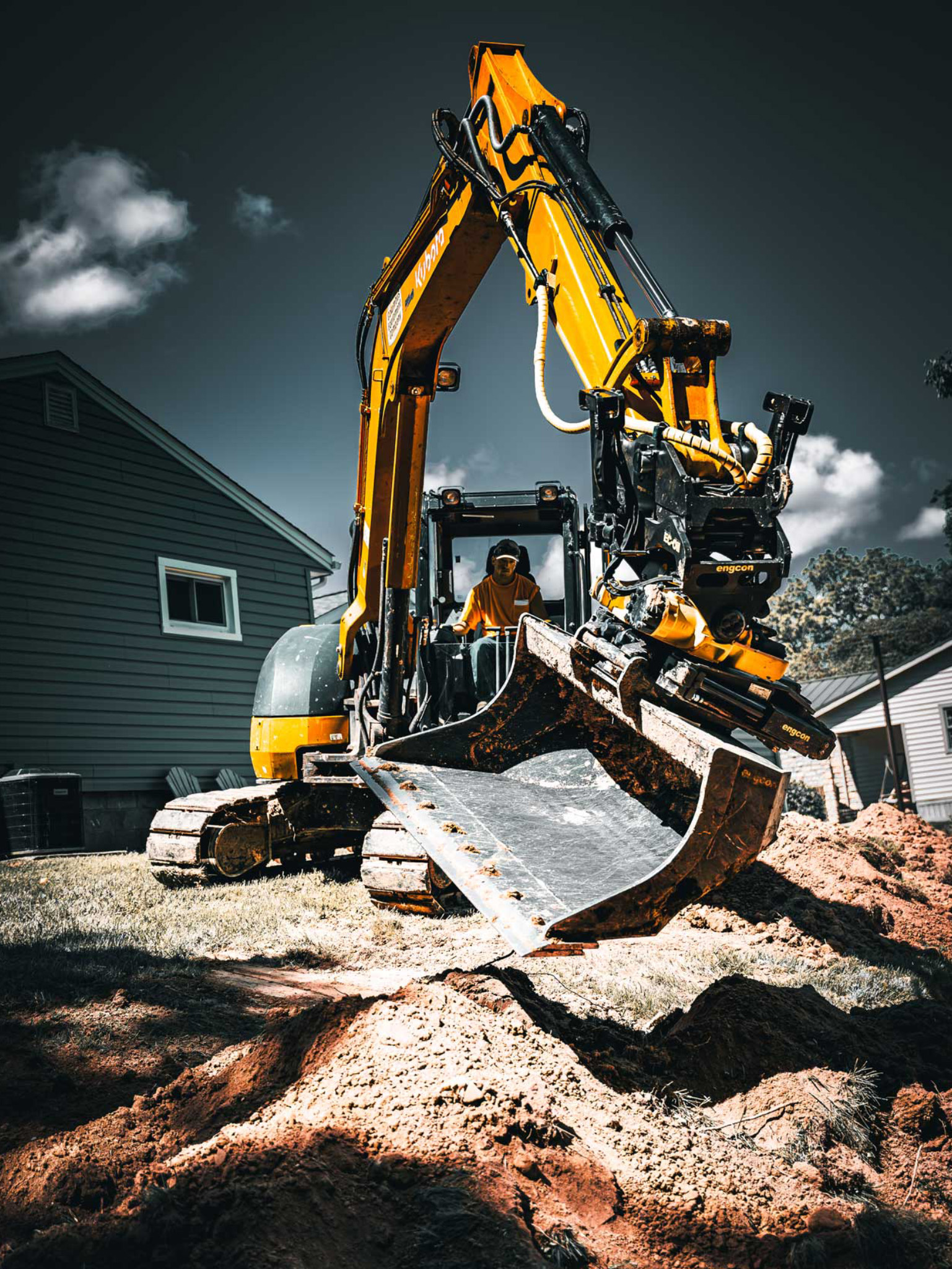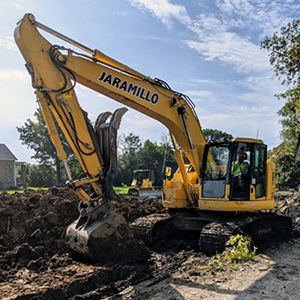Excavating Ohio - Leading Excavation Professionals for Ohio Projects
Excavating Ohio - Leading Excavation Professionals for Ohio Projects
Blog Article
Introducing the Art of Excavation: Pro Tips for Safe and Effective Excavating
As dirt is turned and earth is relocated, the ins and outs of excavation reveal themselves, demanding a keen understanding of tools, soil composition, safety and security procedures, and environmental factors to consider. The know-how needed to browse these components efficiently can suggest the difference in between an effective excavation job and a possible disaster.
Value of Proper Devices
To make certain the safety and performance of any excavation project, making use of the appropriate tools is critical. The right tools not just boost productivity however additionally reduce dangers related to excavating. Excavation projects vary in range and intricacy, varying from small domestic landscaping tasks to large-scale building and construction endeavors. Despite the job size, having the correct tools can make a substantial difference in the result.
These functional makers come in numerous sizes to match various project needs. Tiny excavators are ideal for smaller jobs, while bigger excavators take on much more comprehensive tasks successfully.
Apart from excavators, various other crucial devices includes dump bulldozers, trucks, and trenchers. Dispose vehicles are important for eliminating and transferring excavated products, while plates are used for digging deep and narrow trenches. Excavators master tasks that require pushing big quantities of soil or debris. By investing in the suitable devices, excavation jobs can be finished safely, on time, and with accuracy.
Comprehending Dirt Make-up
An extensive understanding of dirt structure is fundamental for executing excavation jobs with accuracy and safety. Recognizing the various kinds of soil is essential as it directly impacts excavation techniques, devices choice, and overall project effectiveness.
Sand bits are the biggest and give good drainage however use little cohesion. Silt fragments are smaller sized than sand yet larger than clay, using moderate drainage and communication. Clay bits are the tiniest and provide high communication but inadequate drainage. Organic matter, such as decaying plant material, affects soil fertility and security.
Prior to beginning excavation, conducting dirt tests to establish its make-up and qualities is necessary. This information assists in choosing the suitable tools, carrying out security measures, and developing excavation strategies customized to the certain soil problems - dump truck companies in ohio. By understanding soil structure, excavation specialists can boost job end results while making certain security and adherence to best methods
Security Procedures and Procedures
Understanding soil structure is the cornerstone upon which precaution and protocols for excavation tasks are built, making certain the health of employees and the success of the undertaking. There are numerous vital measures that need to be carried out to reduce dangers and prevent mishaps. when it comes to safety and security during excavation.
Primarily, before any excavating commences, an extensive inspection of the site ought to be carried out to recognize any type of potential threats such as underground energies, unsteady dirt problems, or neighboring frameworks that might position a threat. It is critical to have a competent person supervise the excavation procedure to guarantee that all safety and security procedures are complied with strictly.
Additionally, all employees included in the excavation needs to be correctly educated in risk-free excavating techniques and the appropriate operation of devices. By sticking to these safety and security actions and protocols, excavation projects can be completed effectively click here for more and without event.
Effective Excavation Preparation
When getting started on an excavation task, thorough planning is vital to guarantee efficiency, safety and security, and effective results. Efficient excavation preparation includes several crucial actions that are essential for the smooth execution of the project. The very first step is to conduct a thorough website assessment to recognize any type of possible dangers, such as below ground energies or unstable dirt conditions. This information is crucial for creating a detailed excavation strategy that consists of safety steps and take the chance of reduction strategies.
As soon as the website evaluation is total, the following step is to create a clear timeline and schedule for the excavation activities. This includes determining the sequence of jobs, devices demands, and manpower appropriation. Proper scheduling helps prevent delays and ensures that the project remains on track.

Additionally, communication among all employee is paramount during the planning stage. Clear regulations, regular updates, and reliable coordination are crucial for a successful excavation job. By spending effort and time in careful planning, excavation teams can substantially boost productivity, lessen threats, and accomplish effective results.

Managing Environmental Factors To Consider
With raising focus on ecological sustainability in construction practices, handling environmental considerations has actually become an essential aspect of excavation jobs. Excavation tasks have the possible to influence the surrounding setting through soil disintegration, debris drainage, environment interruption, and contamination of water resources. To mitigate these risks, it is vital to carry out finest practices that focus on ecological protection.

Moreover, appropriate waste administration is crucial to avoid soil and water contamination. Implementing treatments for the disposal of dangerous materials, recycling of waste products, and lessening using dangerous chemicals can significantly decrease the environmental influence of excavation jobs. By incorporating these methods into excavation preparation and implementation, building firms can guarantee that their tasks are not just risk-free and effective however additionally ecologically responsible.
Conclusion
To conclude, understanding the art of excavation needs a complete understanding of correct equipment, soil make-up, precaution, and reliable planning. By adhering to these standards and thinking about environmental aspects, excavations can be conducted safely and efficiently. It is vital to focus more helpful hints on safety and security and performance in every digging job to ensure effective results.
As dirt is transformed and planet is moved, the ins and outs of excavation reveal themselves, demanding a keen understanding of tools, soil composition, safety and security protocols, and environmental considerations.To ensure the safety and efficiency of any type of excavation task, utilizing the suitable tools is extremely important.A thorough grasp of soil structure is essential for executing excavation projects with accuracy and security. Comprehending the different types of dirt is essential as it directly influences excavation approaches, tools selection, and total task efficiency. By comprehending dirt structure, excavation professionals can boost project outcomes while making certain safety and adherence to finest techniques.
Report this page